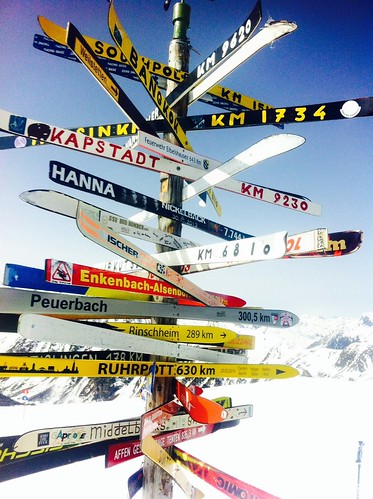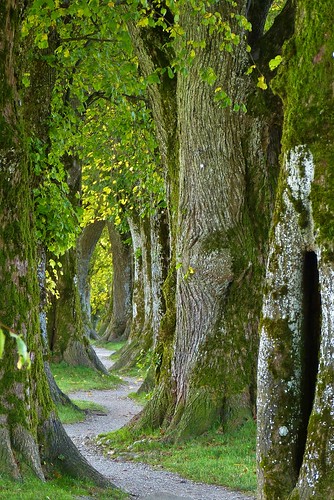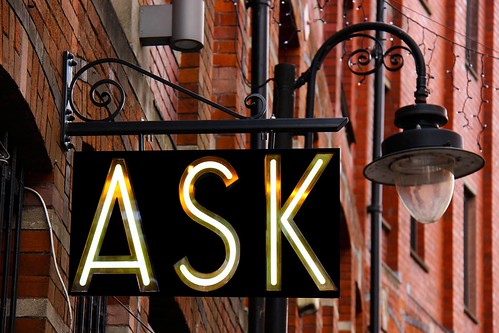Through the Eyes of an Educator: Becoming a Cartographer
These days we can’t go more than four minutes on any social media platform without noticing someone sharing about doing life their own way. Any number of hashtags, from vanlife to roadschooling and living off the grid, pop up to intrigue viewers to follow the journey of those choosing to do their own thing. Perhaps we’re moving into a time of life where the non-traditional is becoming traditional, or perhaps, if that’s not the case, it’s the bubble in which my brain wants to live.

Depending on the environment in which we grow, we’re often taught that there’s this one path to follow and any pivot from it is “different,” a “choice.” Oddly, from the moment we emerge from the womb, lovely voices tell us we can be anything we want to be when we grow up; yet, somewhere along the line, that can shift and we can have a tendency to feel like we must fit snugly into a box.
What if we could make our own box, or better yet, fling the idea of said box to the curb—and charter our own path?
Today, we come upon heaps of young humans who are literally seeking a non-traditional path from the time they have the ability to decide. Some young minds today see a path in activism, community organizing, content creator, multipotentialite, or one of a zillion options that might not fit whatever that version of a traditional narrative is—or maybe, if we’re lucky, it does. Some are privileged to have options, some have decided early on in life that they’ll follow their hearts wherever they may lead, and still others feel as if they don’t have a space in which to allow their authentic self to grow.
What if instead of the lawyer, mechanic, nurse, or teacher, they want to be a cook, artist, YouTuber, blogger, yoga teacher, dog walker, wellness practitioner, gig worker, or something that’s not even a thing yet? What if their most important value is to be happy and they don’t yet know the direction they want to take—but happiness, of service, and fulfillment is at the forefront of it?

When the path isn’t clear, doesn’t exist, the traditional isn’t the one you want and you need to go against the grain or blaze your own trail, how do you find your way? How do you balance the meticulous details of mapmaking with the heart-leading feelings of wayfinding?
I clearly recall teaching geography to hundreds of ninth graders. We looked at maps of all kinds, discussed the design differences, the labels of top and bottom, the effect of longitude on time zones and latitude on climate zones, and of course, how life in all spaces has similarities, challenges, and differences. We even tossed a stuffed globe around the room so students could try to locate a city, country, or continent on a three-dimensional object. There, in their fourteen year old hands, was a tangible thingamabob showing the myriad of ways to get from one place to another, the proximity to water and land—and how sometimes, you may quite literally have to be the first explorer to chart a course and design that new map.
Of course, not everyone is comfortable with the responsibilities that come with that adventure seeking.
Sometimes there are loud naysayers certain of the journey’s failures, even though they have no experience on which to draw. There are challenges, struggles, and uncomfortable decisions that must be made along the way—and some spectators will wonder what’s the point in doing something different when following in others footsteps might be easier. And, of course there are those who may really believe in what you’re doing but don’t see it as a possibility for themselves as, perhaps, there are obstacles that seem too large or too hard or not worth it to overcome. I mean, if Queen Elsa sang about the discomfort and excitement of the unknown, it has to be true, right? What then?
How can we teach our young people skills to reinforce their strengths? How can we help them develop tools to help them plot their own points, navigate their turns, and steer their own ship? How can we help guide them on the path that deep within their bones feels like the right one and know that they always have the power to divert to another unknown or familiar course?

How do we encourage the joys of excitement, the energy of curiosity, and strengthen mindfulness and confidence to deal with any challenges or disappointments that might meet them at any turn?
While it’s possible they may encounter stormy seas, imposter syndrome, or a myriad of obstacles attempting to throw them off course, it’s their journey—and a good captain understands the need for guidance and to know when it’s time to step back, trust in the burgeoning captain, and hand over the wheel. And whether they falter, need to re-position, or thrive, flourish & soar, they will have done it their way and take pride in all facets of that adventure.
Full speed ahead.
Four ways to develop your cartography

Take the steps
“What should you do now? Find a new way. A better way. Your way. The unknown, unchartered path through this wild new world that allows you - yourself, in your uniqueness - to reclaim the full measure of your true nature.” - Martha Beck
Taking that initial step is one of the challenges along the way. If we don’t start, we’ll never know. Yet, sometimes, that fear of failure knocks us for a loop and imposter syndrome rears its ugly head. While we may logically know that these experiences are had by anyone who dares to dream, letting it actually sink in can deter us before we begin. Take the steps. If believing in yourself is hard, build up the fortitude. Perhaps a mentor, community, facilitator, friend, family member, master teacher, or even strangers can help.
Try your hand at things you don’t know, things that spark your curiosity, or bring out your inner excitement. Each time you do a new thing and learn that failure is not only okay but a path to success, and that you might surprise yourself and fly, you’re strengthening that courage, that belief system, and those adventure-seeking skills. And, of course, once you’re walking on that new path, turn around and lend a hand to someone who was at one point where you were. You’ll quickly find that all of a sudden, you’re guiding others on what was once an awkward and difficult start.

Build on your strengths
“It’s called wayfinding, Princess. It’s not just sails and knots, it’s seeing where you’re going in your mind. Knowing where you are, by knowing where you’ve been.” - Moana
What brings you joy? What are you good at? What activities can you participate in that make you feel confident, of service, or showcase your leadership skills and many other talents? Perhaps we know where we thrive and the parts of us that could do with some work. Perhaps we excel in what we’re doing or wish we had more time to put our talents into something different. Wherever you fall, tap into your strengths: those items like honesty, humility, curiosity, kindness, creativity, or perseverance.
Consider the parts of your character that can help guide you on your life’s journey. Foster them, practice them, and engage with ways that help build a better you. Every single one of us can benefit from finding our strengths, harnessing them, and working on the ones that might move us in the direction of our dreams. Maybe you don’t yet know what those strengths are or where those dreams lie. It’s never too early or too late to dabble in exploring; you might even surprise yourself.

Notice the way it feels
“The true gift of a wayfinder’s journey is not arrival at a destination; it is who we become along the way as we fulfill our potential.” - Dr. Chellie Spiller
Yoga teachers ask “what feels good in your body” and “can you notice the way it feels?” Sometimes we can, sometimes it’s confusing, and sometimes it takes a few minutes for our brains to process that physical experience. There’s power in remaining present, allowing the constant noise of our thoughts to ebb and flow and to focus our minds on quite literally how we feel. Small acts of this noticing can begin at an early age and continue to be cultivated throughout our lives. We may not have the words to explain that something feels off or elevated, but somatically, we know. We may not have the thesaurus of terms to fully ascertain exactly what we feel, but maybe we know that we just feel and that’s something.
Noticing how it feels can help guide our journey towards that which feels authentic and that which feels icky. And yes, sometimes we have to learn that sitting with discomfort is part of the process of moving to the next or that unknown. But regardless of whether we look to Disney movies, spiritual leaders, life coaches, explorers, entrepreneurs, motivational speakers, or anyone else, the message is clear: if we follow what calls to us, what our heart tells us is right, we’ll feel empowered to continue ahead.

Design your own journey
“Wayfinding requires that we become ‘explorers of our world’ seeking to discover and shine a light upon that which is not seen. To become an explorer of the world is to set sail beyond the compass of our existing knowledge and to traverse unchartered waters in ourselves and in the world.” - Dr. Chellie Spiller
As a toddler, I believed I could do whatever I wished in the world. As a young adult, it didn’t feel like that. Whether you’re the student, the teacher, the teenager, or the young at heart who wonders if they can design their own journey, the answer is, yes you can! Students are often given prompts: where do you see yourself in the next ‘x’ years, if you could do anything; what would it be, if money was no object what would you do and where would you live, etc..
Prompt yourself! See what comes up for you. Ask the questions, ask them often, see what sticks, see what’s flexible. It might be about a job, a career path, a location, a feeling, a balance, a value, a focus, or something else, but asking the question, playing with what comes up, those are the first steps to where you’re headed. You don’t have to know where the journey ends up—in fact, that’s not the most important part. The learning, the growing, the figuring it out, the development of the true you—that’s what matters.
The map might not exist yet, but the adventure is out there. Are you ready to explore?

Please click the photo below for a collection of my Through the Eyes of an Educator columns:
Stacey Ebert, our Educational Travels Editor, is a traveler at heart who met her Australian-born husband while on a trip in New Zealand. Stacey was an extracurricular advisor and taught history in a Long Island public high school for over fifteen years, enjoying both the formal and informal educational practices. After a one year 'round the world honeymoon, travel and its many gifts changed her perspective. She has since left the educational world to focus on writing and travel. She is energetic and enthusiastic about long term travel, finding what makes you happy and making the leap. In her spare time she is an event planner, yogi, dark chocolate lover, and spends as much time as possible with her toes in the sand.
Check out her website at thegiftoftravel.wordpress.com for more of her travel musings.




















